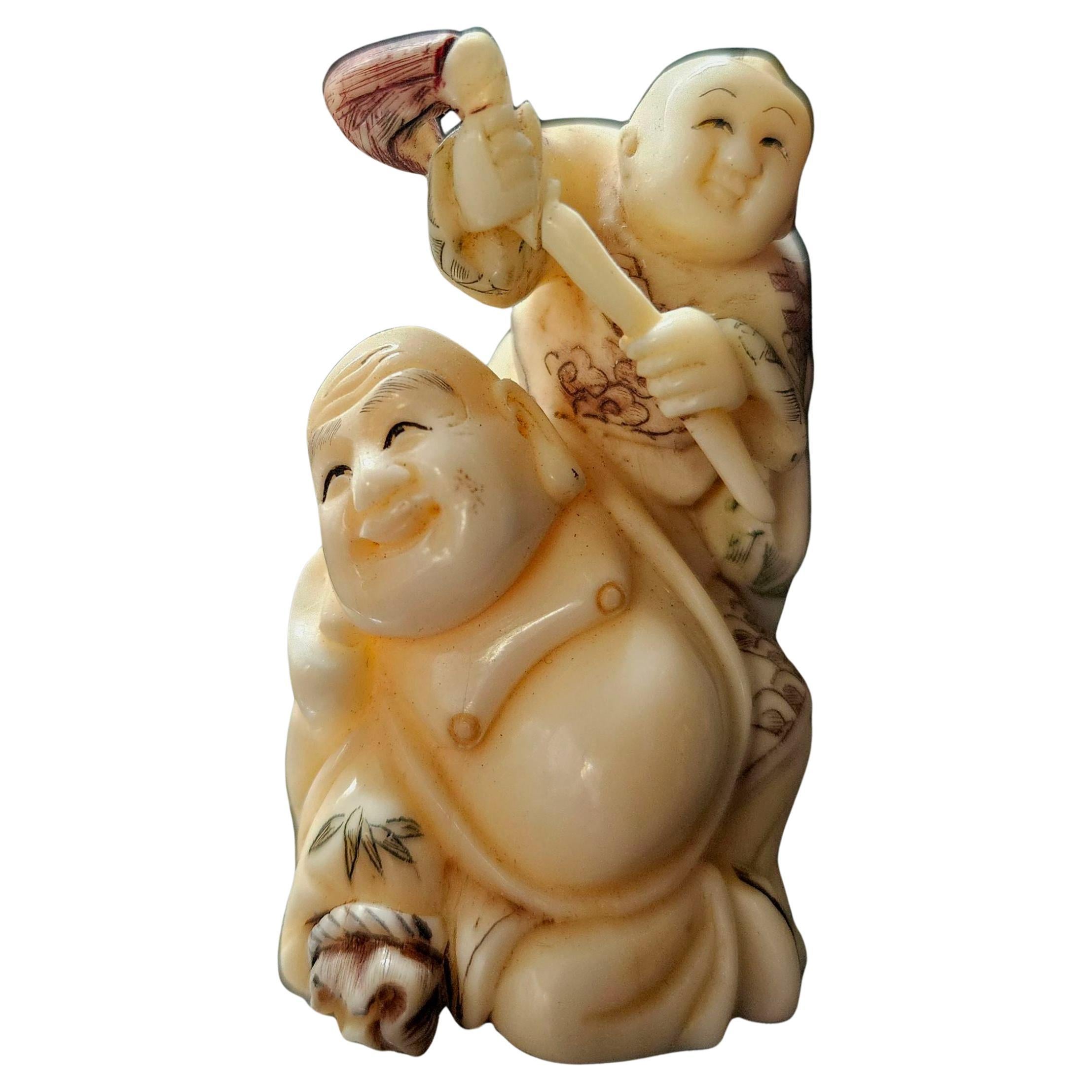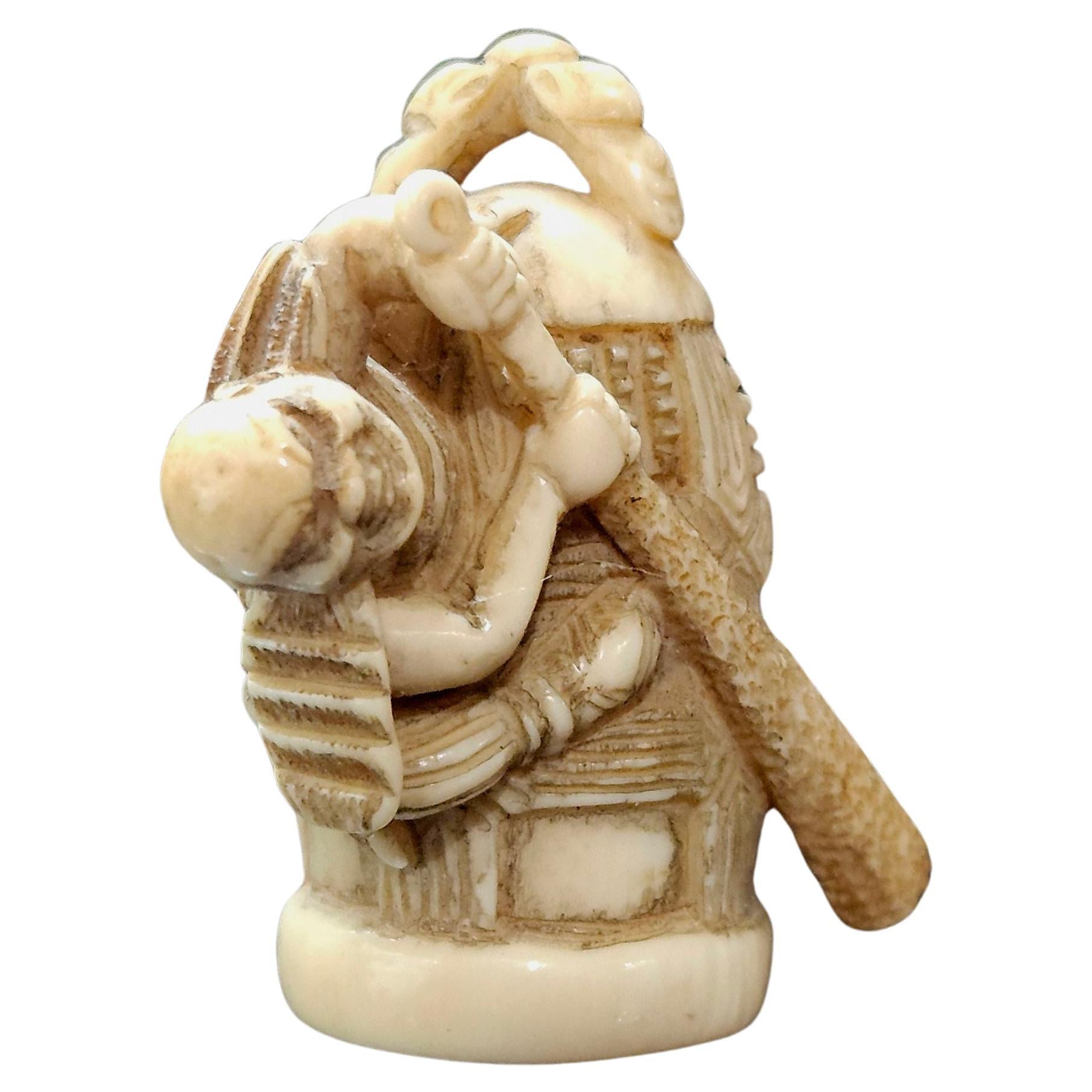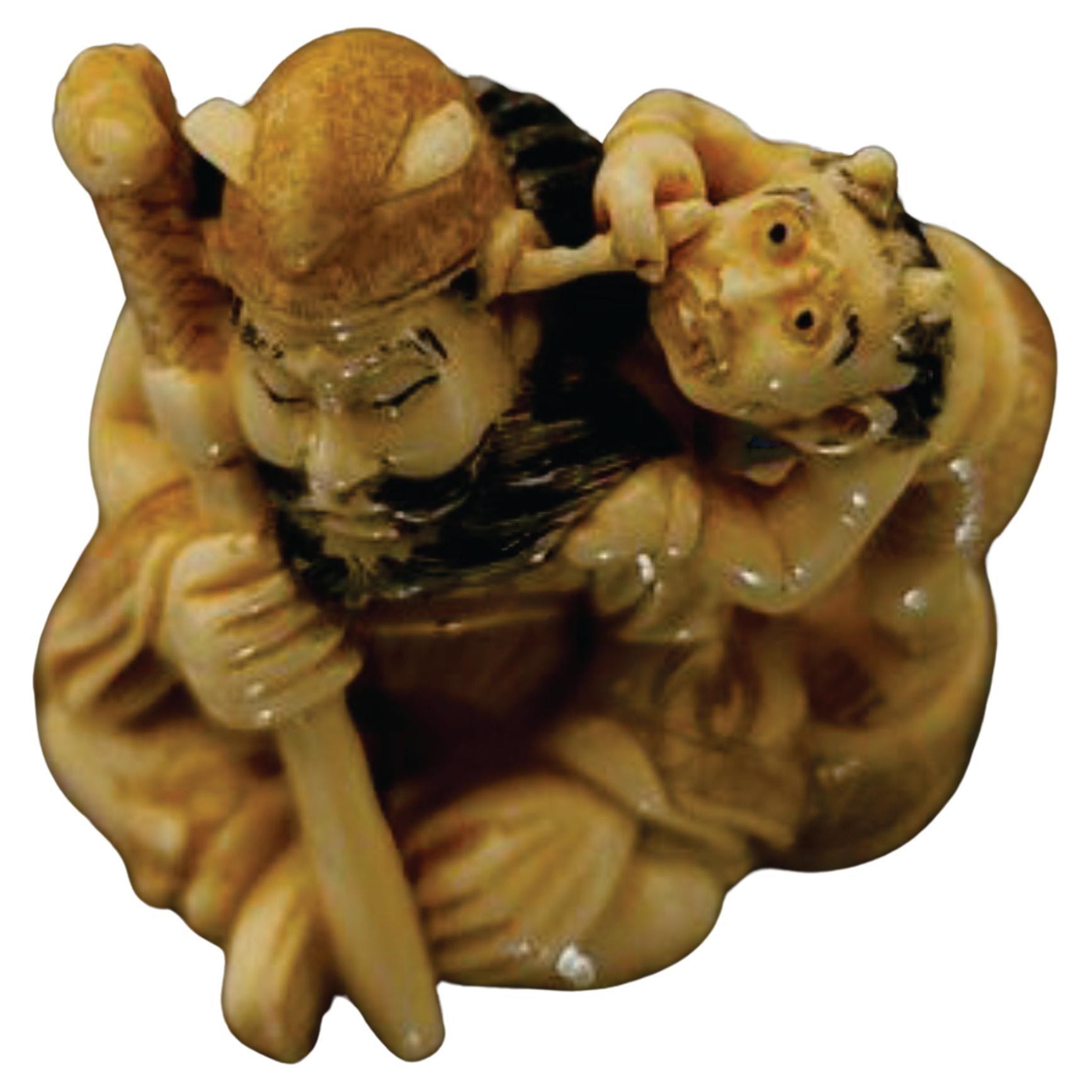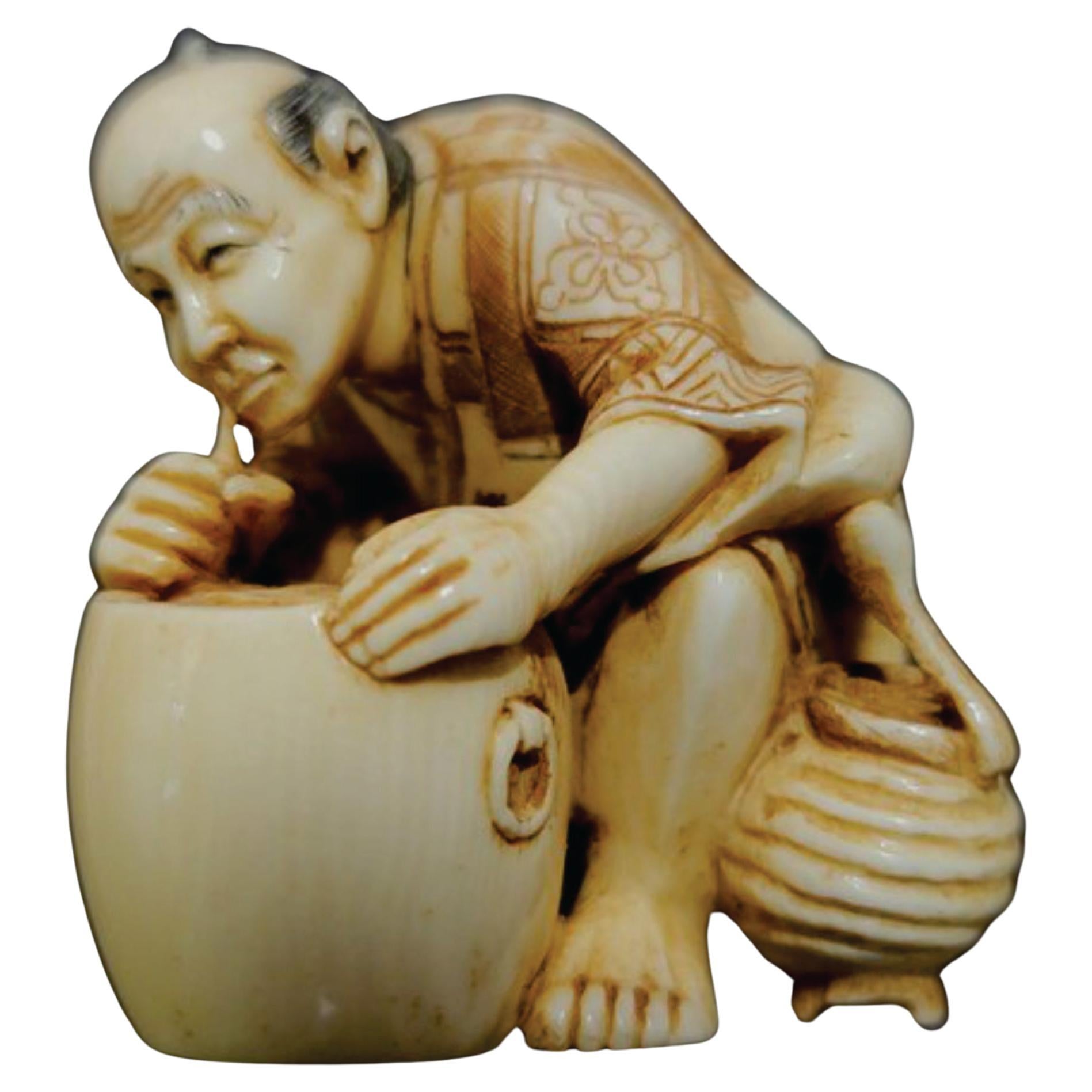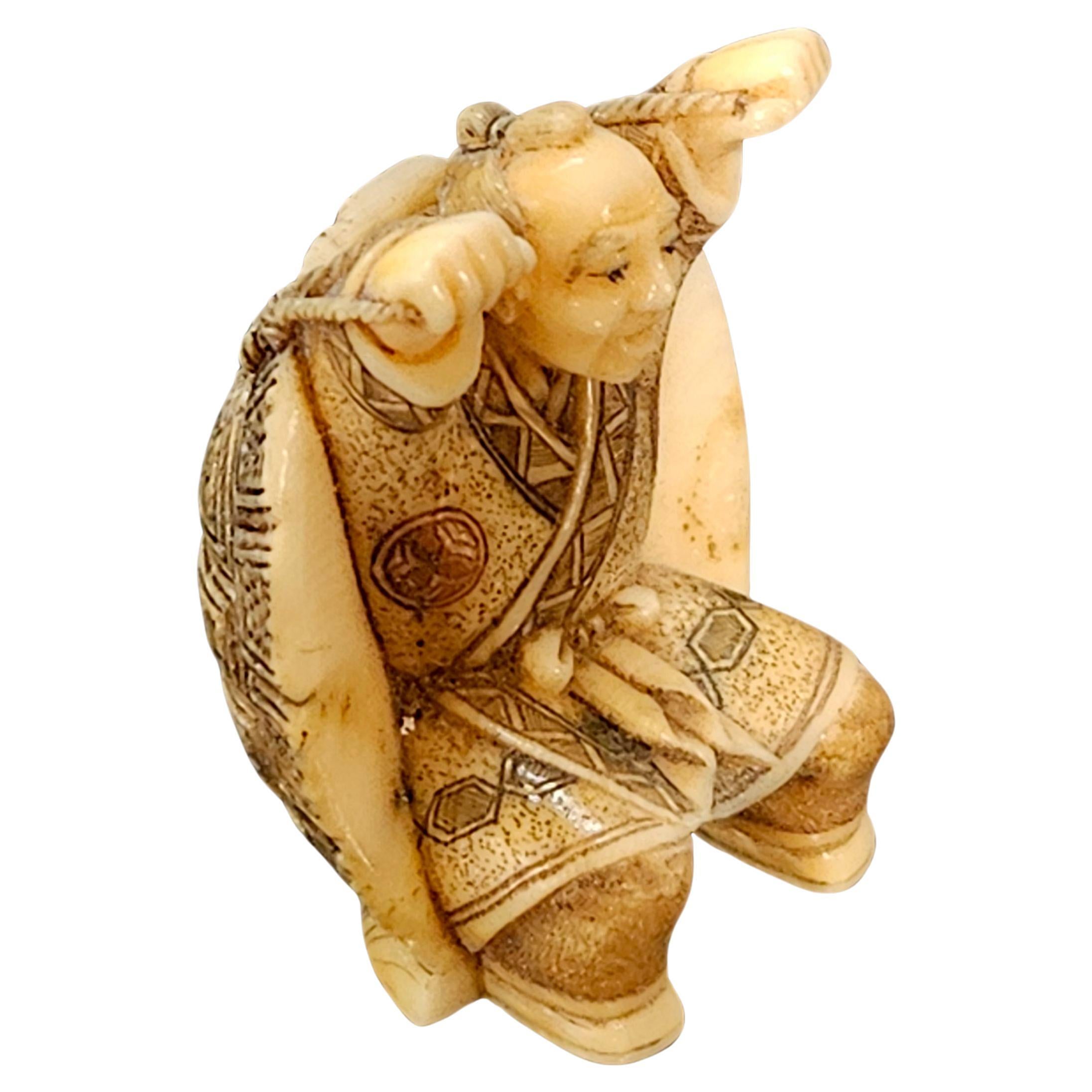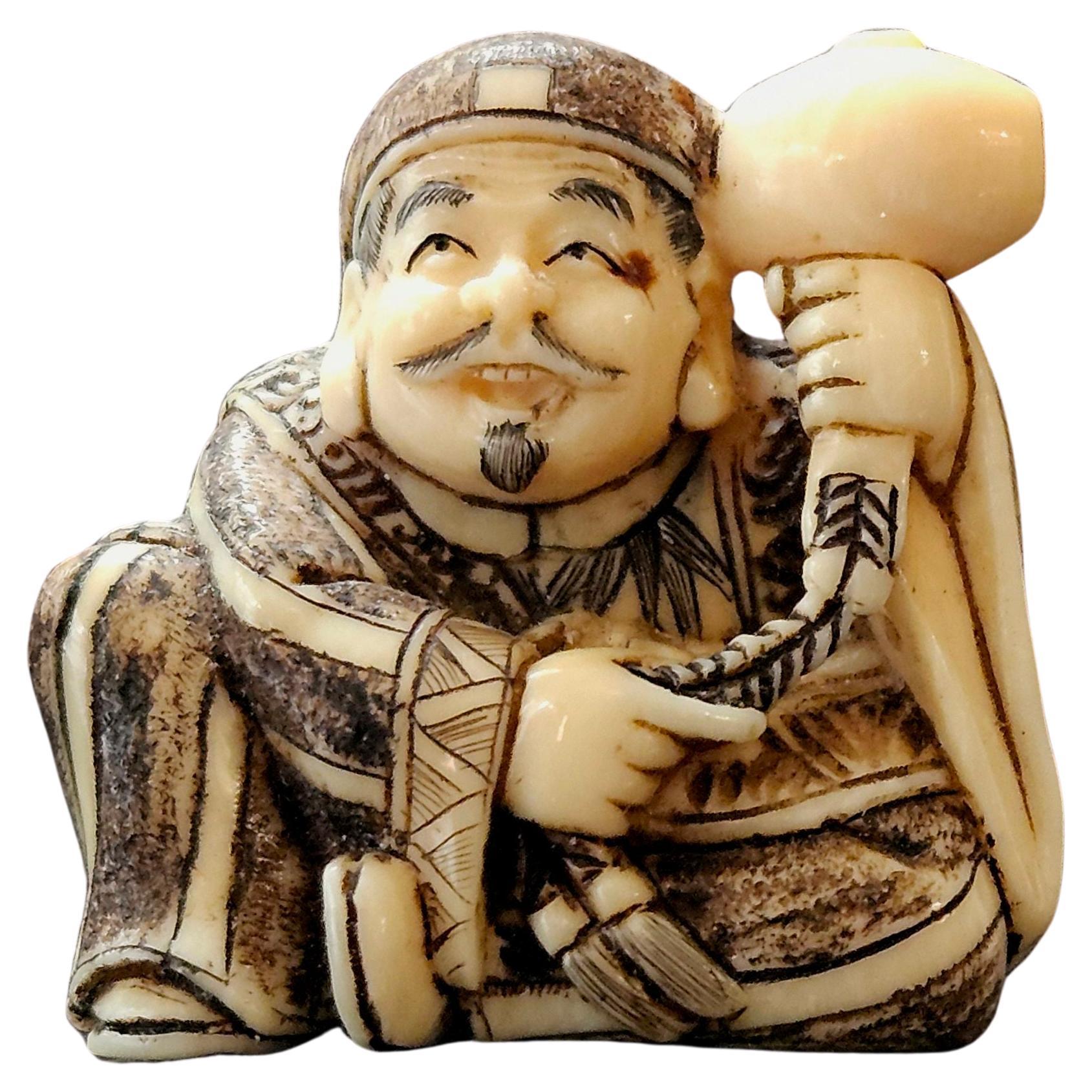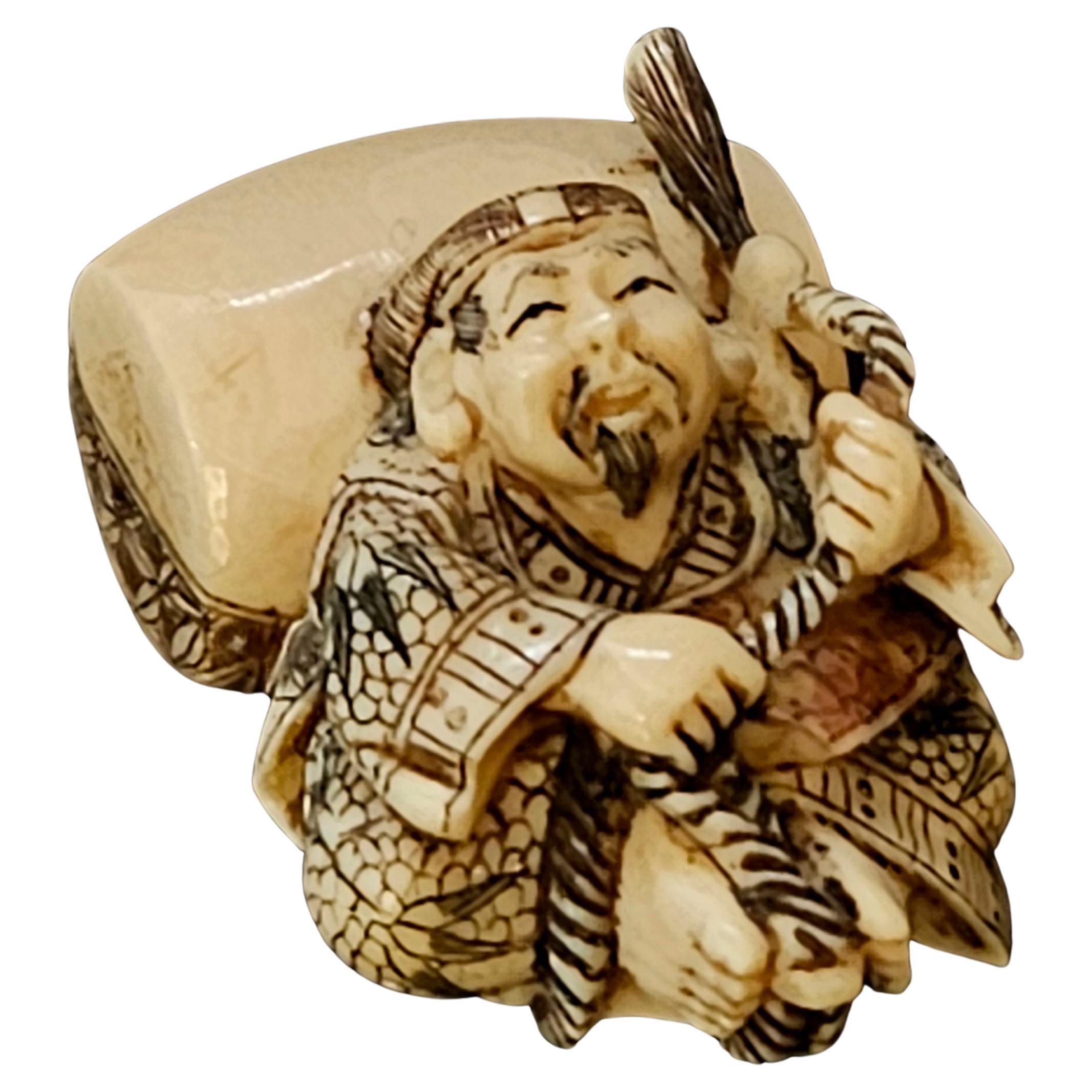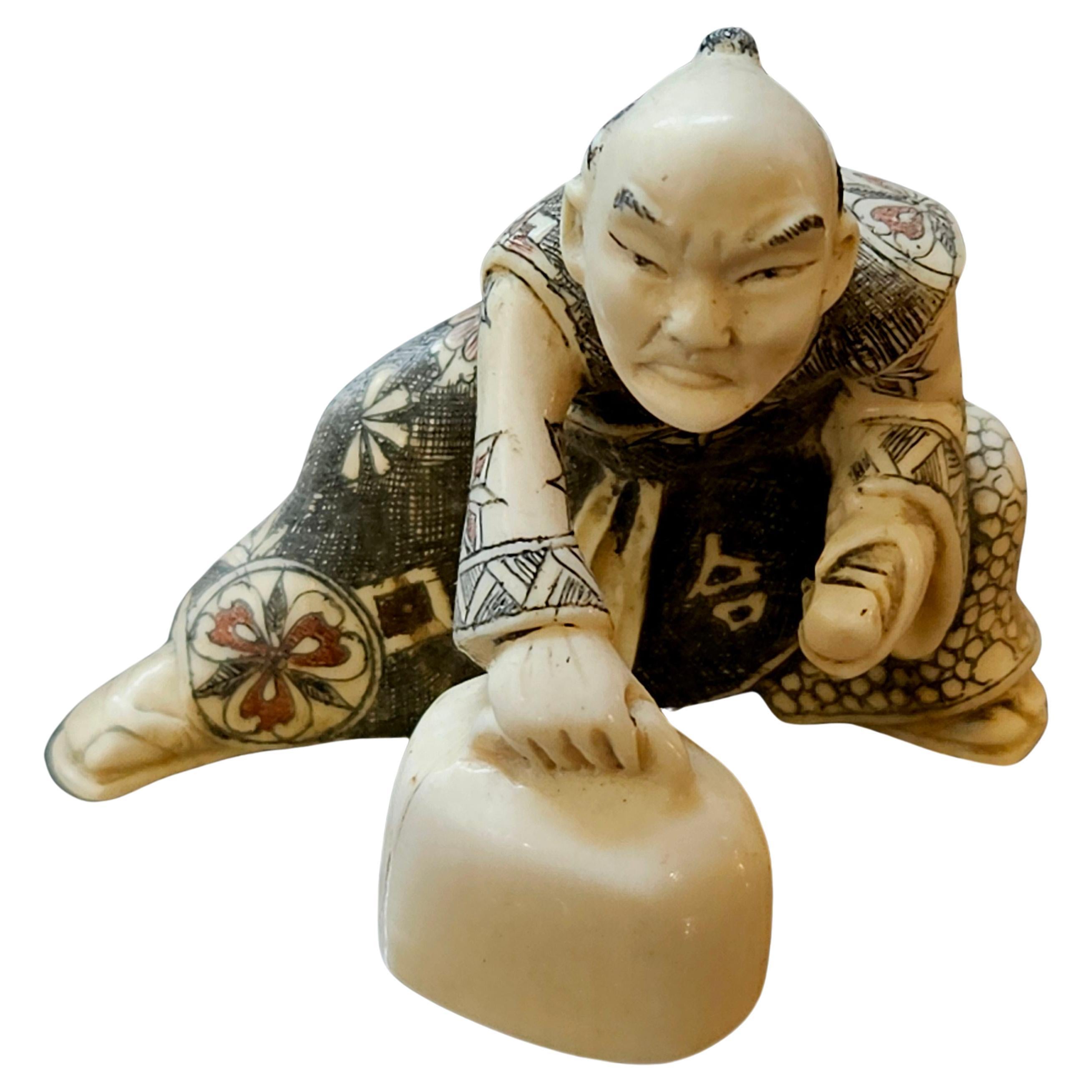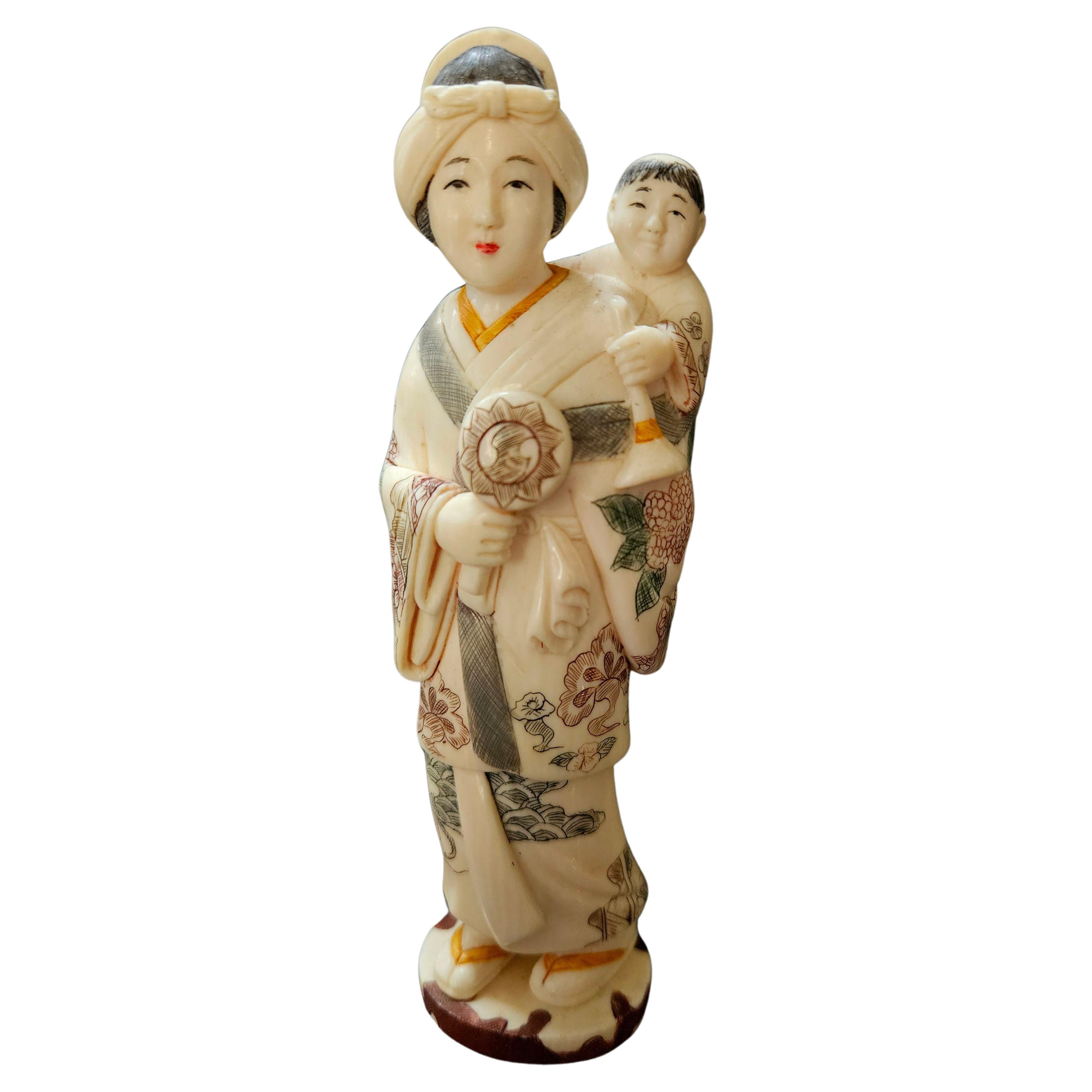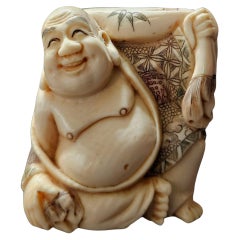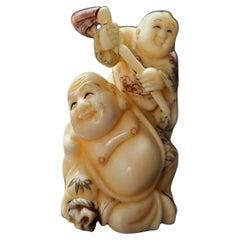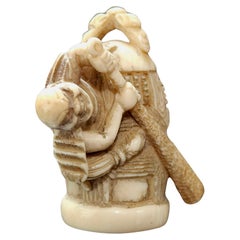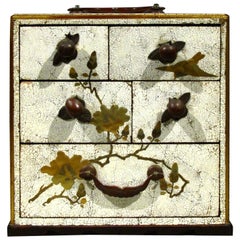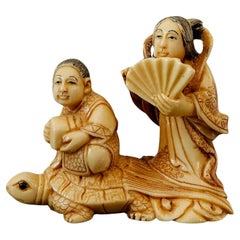
Japanese Carved Netsuke Polychrome Figure Group"Floating on sea" Signed , Meiji
View Similar Items
Video Loading
Want more images or videos?
Request additional images or videos from the seller
1 of 17
Japanese Carved Netsuke Polychrome Figure Group"Floating on sea" Signed , Meiji
About the Item
- Dimensions:Height: 1.5 in (3.81 cm)Width: 1.25 in (3.18 cm)Depth: 1.25 in (3.18 cm)
- Materials and Techniques:
- Place of Origin:
- Period:
- Date of Manufacture:19th Century
- Condition:Wear consistent with age and use. Wear consistent with age and use.
- Seller Location:Norton, MA
- Reference Number:1stDibs: LU5848239732492
About the Seller
5.0
Platinum Seller
These expertly vetted sellers are 1stDibs' most experienced sellers and are rated highest by our customers.
Established in 2000
1stDibs seller since 2021
88 sales on 1stDibs
Typical response time: 1 hour
More From This SellerView All
- Japanese Carved Netsuke Polychrome Figure Group #2 by Yoshikawa , MeijiLocated in Norton, MANetsuke Japanese Hand-Carved Polychrome Figure Group #2 by Yoshikawa "The Happy Buddha and a Kid" #H1, Signed on the bottom from the Meiji period. A truly hand-carved ivory figure wi...Category
Antique 19th Century Japanese Decorative Boxes
MaterialsIvory, Paint
- Japanese Carved Netsuke Polychrome Figure Group #1 by Yoshikawa , MeijiLocated in Norton, MANetsuke Japanese Hand-Carved Polychrome Figure Group #1 by Yoshikawa "The Happy Buddha and a Kid" #H1, Signed on the bottom from the Meiji period. A truly hand-carved ivory figure wi...Category
Antique 19th Century Japanese Decorative Boxes
MaterialsIvory, Paint
- Japanese Carved Netsuke Polychrome Figure Group by Gyokuseki (玉石) , MeijiLocated in Norton, MANetsuke Japanese Hand-Carved Polychrome Figure Group depicts a man holding a large cudgel and twining around a big bell, Signed by Gyokuseki (玉石) on the bottom from the Meiji Period. A truly hand-carved ivory figure with fine craftsmanship in a detailed carving This item is 1" wide x1" deep x 1.5" high in dimension, from the 19th century. This item is in excellent condition with no damages. Shipping Note: USA only, no International shipping The Essence of Netsuke: Like all art objects of great worth, netsuke distills the essence of a specific time and place. Worn as part of a traditional Japanese man’s ensemble from the 17th century onwards, the netsuke’s purpose was hyper-specific, and its functional simplicity lent artists unlimited freedom to constantly redefine what it could be. Formally, netsukes have few requirements: they must be small, they must have holes through which to pass a single cord, and they must have no protuberances that could damage one’s kimono. Everything else is left to the carver’s imagination. As such netsuke differs in style, subject, and material as widely as the personalities of their makers, and they are consequently supremely collectible. Netsuke emerged as a practical solution to dressing in 17th-century Japan. ‘Men’s kimonos didn’t have sewn-up sleeves — they were completely open, front and back, and that meant that the sleeves couldn’t be used as a pocket, as they could in women’s kimonos,’ Goodall explains. To carry things such as tobacco, medicine, or other necessities, men hung stylish inro and other vessels from cords looped under and behind the wide sashes that held their kimonos in place. At the other end of those cords, men fastened small, ornamental objects as counterweights; those objects evolved into netsuke. The netsuke’s origins are still ‘theoretical’, Goodall says. ‘It’s thought that, with increasing imports from China in the late 17th and early 18th centuries, the toggles that were used on Chinese clothing...Category
Antique 19th Century Japanese Decorative Boxes
MaterialsIvory, Paint
- Japanese Carved Netsuke Polychrome Decorated Figure Group by Tomoaki, MeijiLocated in Norton, MAJapanese Carved Netsuke Polychrome Decorated Figure Group, Signed by Tomoaki, Meiji period. Ric.NA005 A truly hand-carved ivory figure group, depicting a ghostbuster holding a sword...Category
Antique 19th Century Japanese Decorative Boxes
MaterialsIvory, Paint
- Japanese Carved Netsuke Polychrome Figure "Sumo" Signed, Meiji PeriodLocated in Norton, MANetsuke Japanese Hand-Carved Polychrome Decorated Figure "Sumo", depicting a strongman holding a big rope and pulling something, signed on the bottom from the Meiji period. This it...Category
Antique 19th Century Japanese Decorative Boxes
MaterialsIvory, Paint
- Japanese Carved Netsuke Polychrome Decorated Figure, Signed by Yoshitomo, MeijiLocated in Norton, MANetsuke Japanese Hand-Carved Polychrome Decorated Figure, Signed by Yoshitomo from the Meiji period. Ric.NA004 A truly hand-carved ivory figure, An old man holding a straw and soaki...Category
Antique 19th Century Japanese Decorative Boxes
MaterialsIvory, Paint
You May Also LikeView All
- Box Wood Netsuke Turtle Mushroom Japanese Japan Signed, 20th CenturyLocated in Amsterdam, Noord HollandLovely and very detailed piece. Signed. Japan 19th or 20th century. Additional information: Material: Porcelain & Pottery Type: Incense Burners, Koro Region of Origin: Japan Period:...Category
20th Century Japanese Decorative Boxes
MaterialsPorcelain
- Japanese Meiji Period Silver Box Signed MasayukiLocated in Newark, EnglandJapanese Meiji period silver box with shibuichi plaque dating circa 1900. The box of rectangular form with a silver polished case stamped Jungin (J...Category
Antique Early 1900s Meiji Metalwork
MaterialsSilver
- Signed Japanese White Lacquer and Maki-E Lacquer Tansu, Meiji PeriodLocated in Ottawa, OntarioThe case decorated overall in crackle-glaze white lacquer and fitted with a patinated metal carrying handle over three tiers of small drawers. The first two tiers are comprised of a ...Category
Antique Late 19th Century Japanese Meiji Lacquer
MaterialsLacquer
- Japanese Bronze and Mixed Metal Box, Signed To Base, Meiji PeriodLocated in Melbourne, VictoriaA rare Japanese Meiji period (1868 - 1912) circular bronze box and cover by Inoue, Kyoto, late 19th century. The cover embossed with gilt, silvered and coppered decoration of inse...Category
Antique Late 19th Century Japanese Metalwork
MaterialsBronze
- Large Meiji Japanese Cloisonne Enamel Box with Fruits, Sea Life, Birds and InsecLocated in New York, NYLarge Meiji Japanese Cloisonne Enamel Box with Fruits, Sea Life, Birds and Insects Coffee Table box An antique Japanese copper trinket box of hexago...Category
Antique Late 19th Century Japanese Decorative Boxes
MaterialsEnamel, Copper
- Japanese Laquered Tray Decorated with People on a Verandah, Meiji PeriodLocated in Lincoln, LincolnshireThis is a good papier mâché, circular, black lacquered tray, hand enameled and gilded, made in Japan during the 19th century, Meiji period. This circular tray is very decorative, ...Category
Antique 19th Century Japanese Meiji Lacquer
MaterialsPaper

